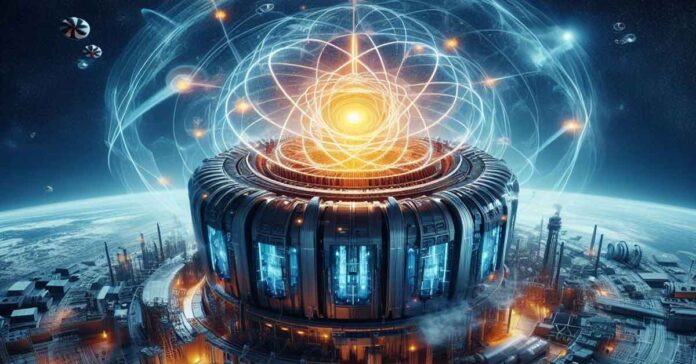The Joint European Torus (JET), one of the world’s largest and most powerful fusion machines, has achieved a new energy record by using the same fuel mixture that will power future fusion reactors.
In its final deuterium-tritium experiments, JET produced stable plasmas that released 69 megajoules of energy, using only 0.2 milligrams of fuel.
This is a significant milestone for the field of fusion science and engineering, as it demonstrates the feasibility and reliability of fusion energy.
What is fusion and why is it important?
Fusion is the process that powers the sun and the stars. It occurs when two light atoms, such as hydrogen, fuse together to form a heavier one, such as helium, releasing enormous amounts of energy in the process.
Fusion energy has the potential to provide a clean, safe, and abundant source of energy for humanity, as it does not produce greenhouse gases or radioactive waste, and uses fuel that is widely available in nature.
How does JET work?
JET is a tokamak, a device that uses powerful magnetic fields to confine a plasma, a hot gas of electrically charged particles, in the shape of a doughnut.
To achieve fusion, the plasma has to be heated to over 100 million degrees Celsius, which is hotter than the core of the sun.
JET uses two types of hydrogen isotopes, deuterium and tritium, as fuel for fusion.
Deuterium is abundant in seawater, while tritium is produced by bombarding lithium with neutrons.
When deuterium and tritium fuse, they produce helium and a neutron, along with a large amount of energy.
What did JET achieve?
In its final deuterium-tritium experiments, JET successfully created and sustained fusion plasmas for five seconds, setting a new world record of 69 megajoules of energy output.
This is equivalent to the energy needed to power 15,000 homes for one second.
JET also tested various operational scenarios and techniques to optimize the performance and stability of the plasma, and to protect the walls of the machine from the intense heat and radiation.
These experiments provided valuable insights and data for the design and operation of future fusion machines, such as ITER and DEMO.
What are ITER and DEMO?
ITER is an international project to build the world’s largest tokamak in France, with the aim of demonstrating the scientific and technological feasibility of fusion energy.
ITER is expected to produce 500 megawatts of fusion power for 50 megawatts of input power, achieving a net energy gain of 10.
ITER is also expected to produce fusion plasmas that last for several minutes, compared to the seconds achieved by JET.
DEMO is a proposed demonstration fusion power plant that will follow ITER, with the goal of producing electricity from fusion on a commercial scale.
Conclusion
JET’s final deuterium-tritium experiments have shown that fusion energy is achievable and reliable, using the same fuel mixture that will be used by future fusion reactors.
JET has also contributed to the advancement of fusion science and engineering, by testing and validating various operational scenarios and techniques for fusion machines.
JET’s achievements have increased the confidence and optimism in the development of fusion energy, which could provide a sustainable, clean, and abundant source of energy for humanity.
FAQs
JET was built in 1983 and started operating in 1984. It is the largest and most powerful tokamak in the world, and the only one capable of using deuterium-tritium fuel.
JET is a joint project of 28 European countries, coordinated by EUROfusion, a consortium of research organizations and universities. JET is also open to international collaboration, and has hosted researchers from countries such as China, India, Japan, Russia, and the US.
Fusion energy is considered to be safe, as it does not produce radioactive waste or greenhouse gases, and does not pose the risk of a meltdown or a runaway reaction. The fusion fuel is also harmless and abundant, and the fusion reactors are designed to shut down automatically in case of a malfunction.
More information: To learn more about the scientific results of the JET DTE3 experiments visit: Joint European Torus successfully tests new solutions for future fusion power plants.

